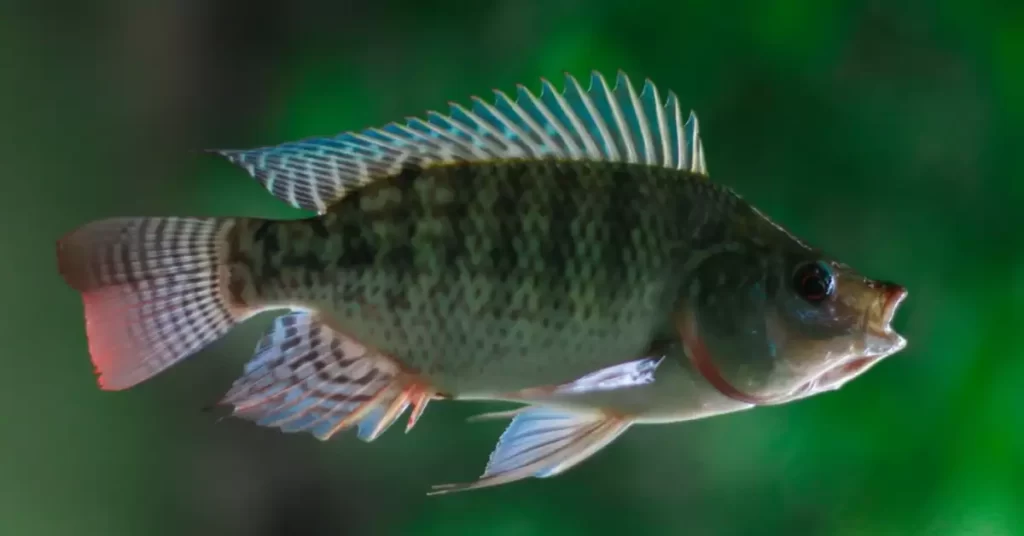Fish fins play a crucial role in a fish’s ability to swim, maintain balance, and even communicate with other fish.
As a fish owner, it can be concerning to discover that your fish’s fins have been nipped or damaged.
This article will discuss what fish fin nipping is, whether fins can grow back, how to prevent nipping, and how to treat your fish’s damaged fins.
Understanding Fish Fins and Nipping
Before diving into the main topic, let’s briefly discuss the types of fish fins and the causes of nipping.
Types of fish fins
There are several types of fins on a fish, including the dorsal, pectoral, pelvic, anal, and caudal (tail) fins. Each fin serves a specific purpose and helps the fish swim, steer, and maintain stability.
Causes of nipping
Fin nipping can occur for various reasons, such as aggression, stress, or even poor water quality. It is essential to identify and address the underlying cause to prevent further damage to your fish’s fins.
Can Fish Fins Grow Back?
The good news is that fish fins can grow back after nipping in most cases. However, the regrowth process depends on several factors.
Factors affecting regrowth
- The severity of the damage
- Fish species
- Age of the fish
- The overall health of the fish
- Water quality and tank conditions
How long does it take for fish fins to regrow?
The time it takes for fish fins to grow back varies depending on the factors mentioned above. Generally, it can take anywhere from a few weeks to several months for fins to regrow completely.
Identifying and Addressing the Causes of Nipping
To prevent further nipping and promote fin regrowth, it is crucial to identify and address the underlying causes of nipping.
Aggression
Some fish are naturally aggressive and may nip at other fish’s fins, especially if they are territorial or feel threatened. Ensure that you choose compatible tank mates and provide ample hiding spots for fish to reduce aggression.
Stress
Stress can cause fish to nip at their own fins or other fish’s fins. Identify stressors, such as overcrowding or a lack of hiding spots, and address them accordingly.
Poor water quality
Poor water quality can cause fish to become stressed and susceptible to fin nipping. Regularly test and maintain water parameters to ensure optimal water quality.
Preventing Fin Nipping
To prevent fin-nipping, follow these guidelines:
- Set up your tank properly with ample hiding spots and swimming space.
- Choose compatible tank mates and avoid overcrowding.
- Maintain optimal water quality through regular water changes and testing.

Treatment and Care for Nipped Fins
To promote fin regrowth and healing, follow these steps:
Water changes
Perform regular water changes to maintain optimal water quality, which will help prevent infections and promote healing. Aim to change about 25-30% of the water weekly.
Medications and remedies
If you notice any signs of infection, such as redness or swelling, consider using over-the-counter medications or natural remedies like Melafix, which can help treat bacterial infections and promote fin regrowth.
Providing a stress-free environment
Ensure that your fish has a stress-free environment with plenty of hiding spots, compatible tank mates, and proper water quality. Reducing stress will help promote healing and prevent further fin-nipping.
When to Seek Professional Help
If your fish’s fins do not show any signs of regrowth after several weeks, or if you notice worsening signs of infection or other complications, consult a veterinarian or aquatic specialist for further guidance.
Potential Complications
Infections
Damaged fins can become infected if not properly treated, leading to more severe health issues for your fish. Monitor your fish closely for any signs of infection and treat accordingly.
Permanent damage
In some cases, fish fins may not grow back entirely, leading to permanent damage. This can occur if the damage is too severe or if the fish’s overall health is compromised.
FAQs
Why do fish nip at each other’s fins?
Fish may nip at each other’s fins due to aggression, territorial disputes, stress, or poor water quality. Identifying and addressing the underlying cause can help prevent further fin nipping.
How can I prevent fin nipping in my aquarium?
Prevent fin nipping by ensuring proper tank setup, choosing compatible tank mates, and maintaining optimal water quality through regular water changes and testing.
What should I do if my fish’s fins are not regrowing after several weeks?
If your fish’s fins do not show any signs of regrowth after several weeks, consult a veterinarian or aquatic specialist for further guidance. They may recommend additional treatments or changes to your fish’s environment.
Conclusion
In conclusion, fish fins can grow back after nipping, provided the proper care and environment are given to promote healing.
It is essential to identify and address the underlying causes of fin nipping to prevent further damage and ensure your fish’s overall health.
Regular water changes, compatible tank mates, and a stress-free environment will go a long way in keeping your fish happy, and healthy, and their fins intact.